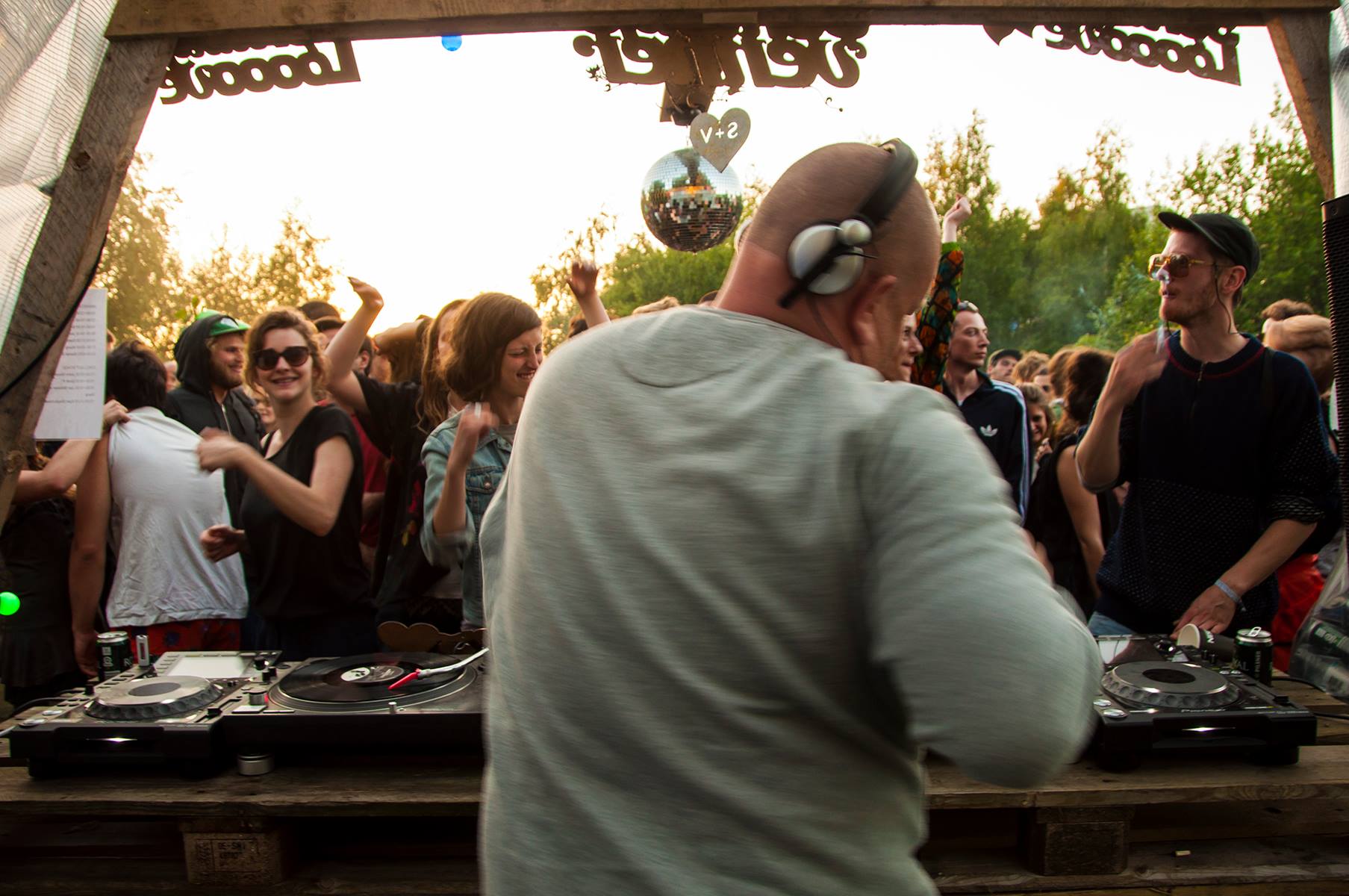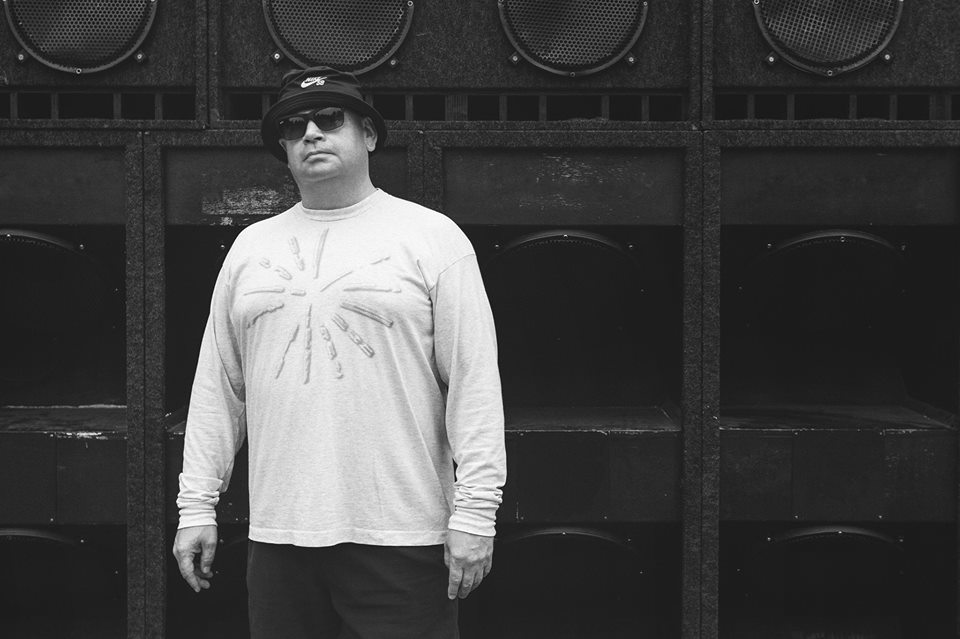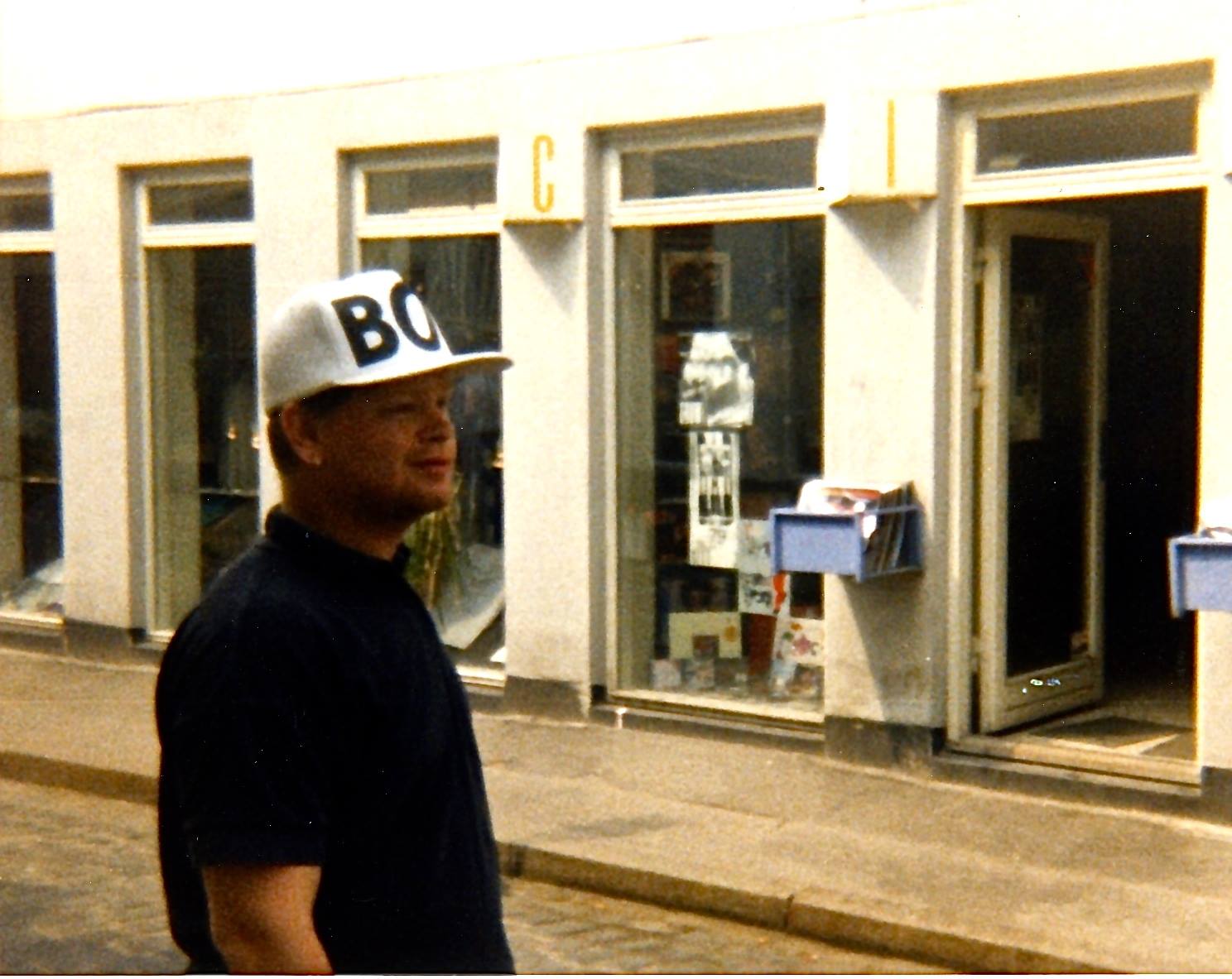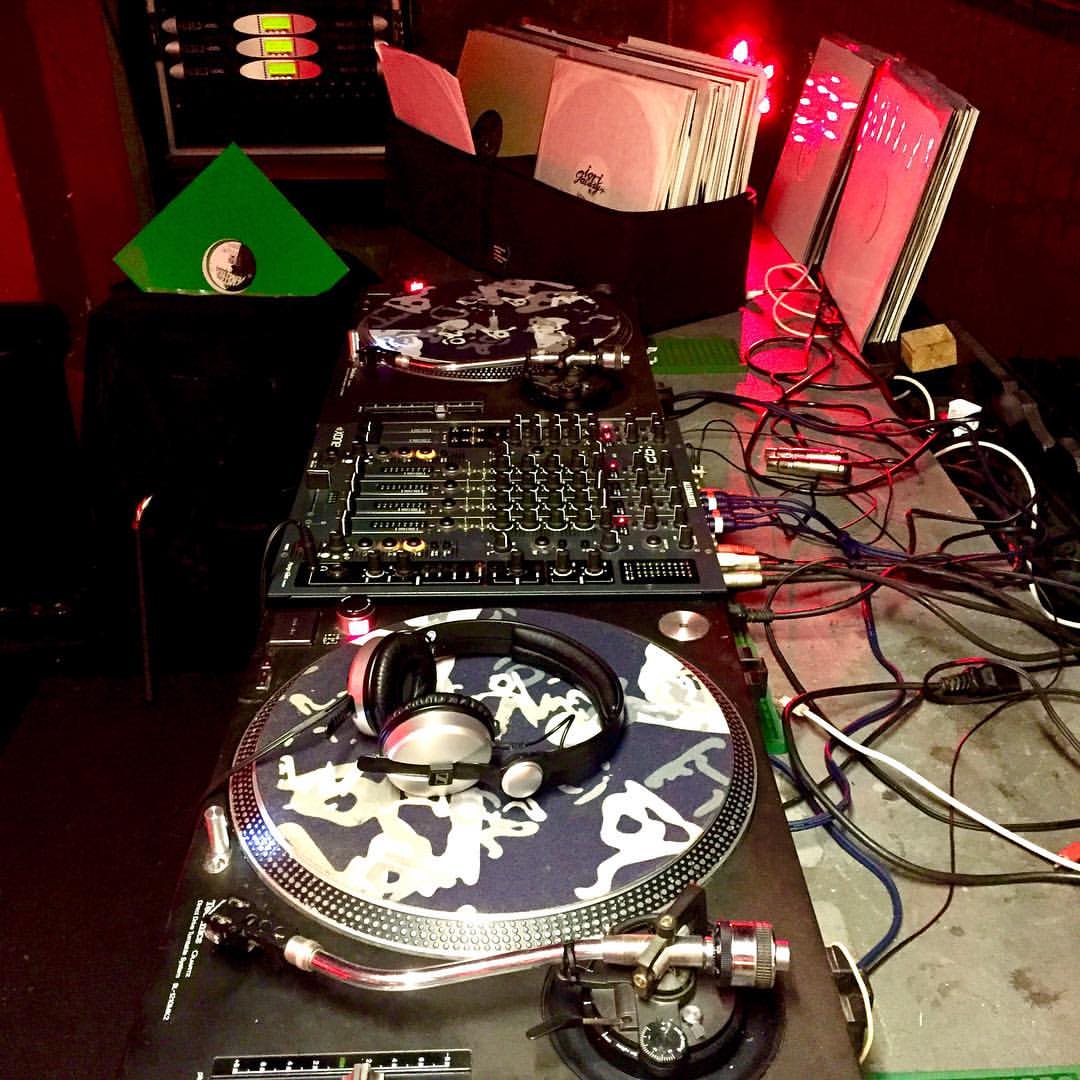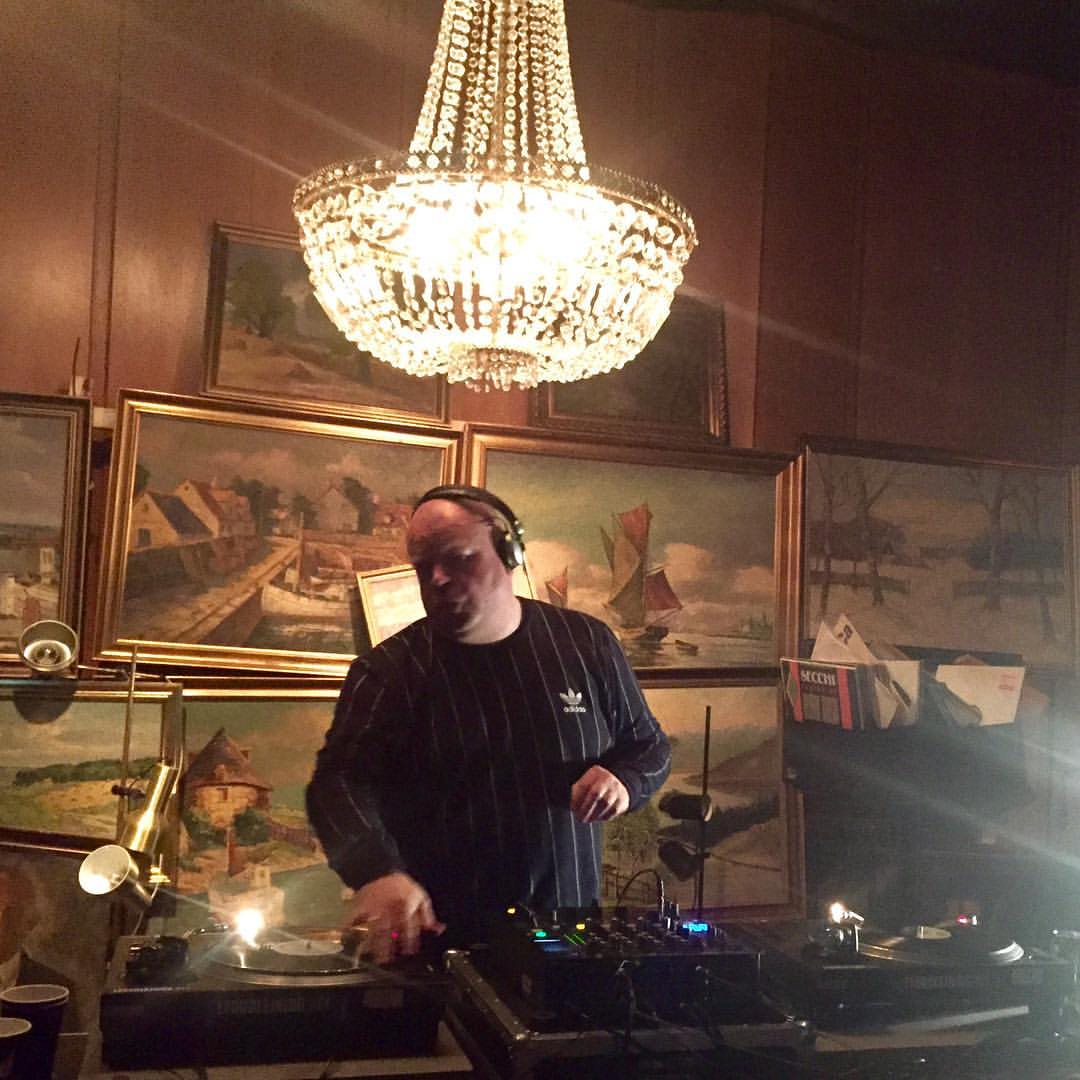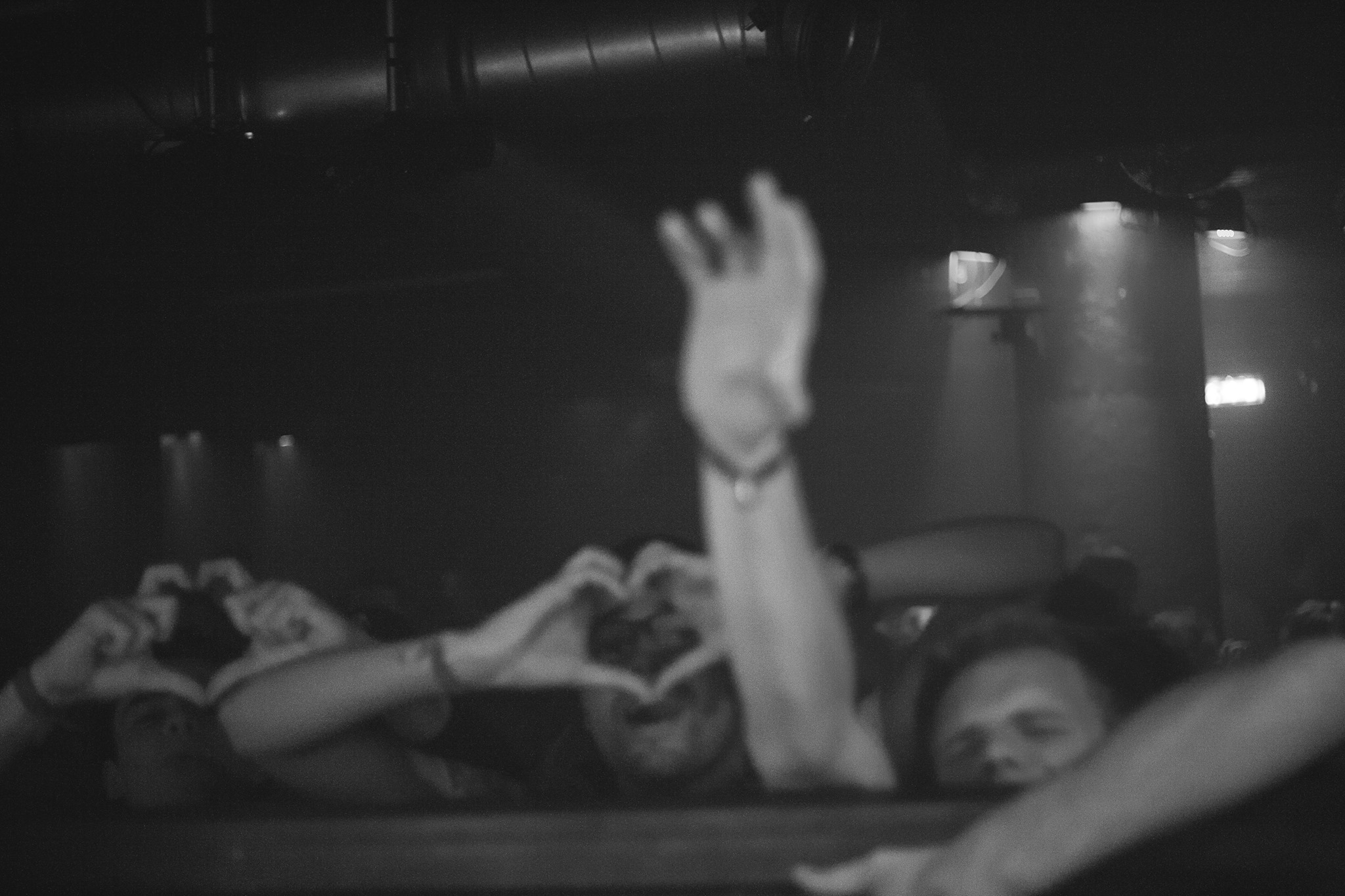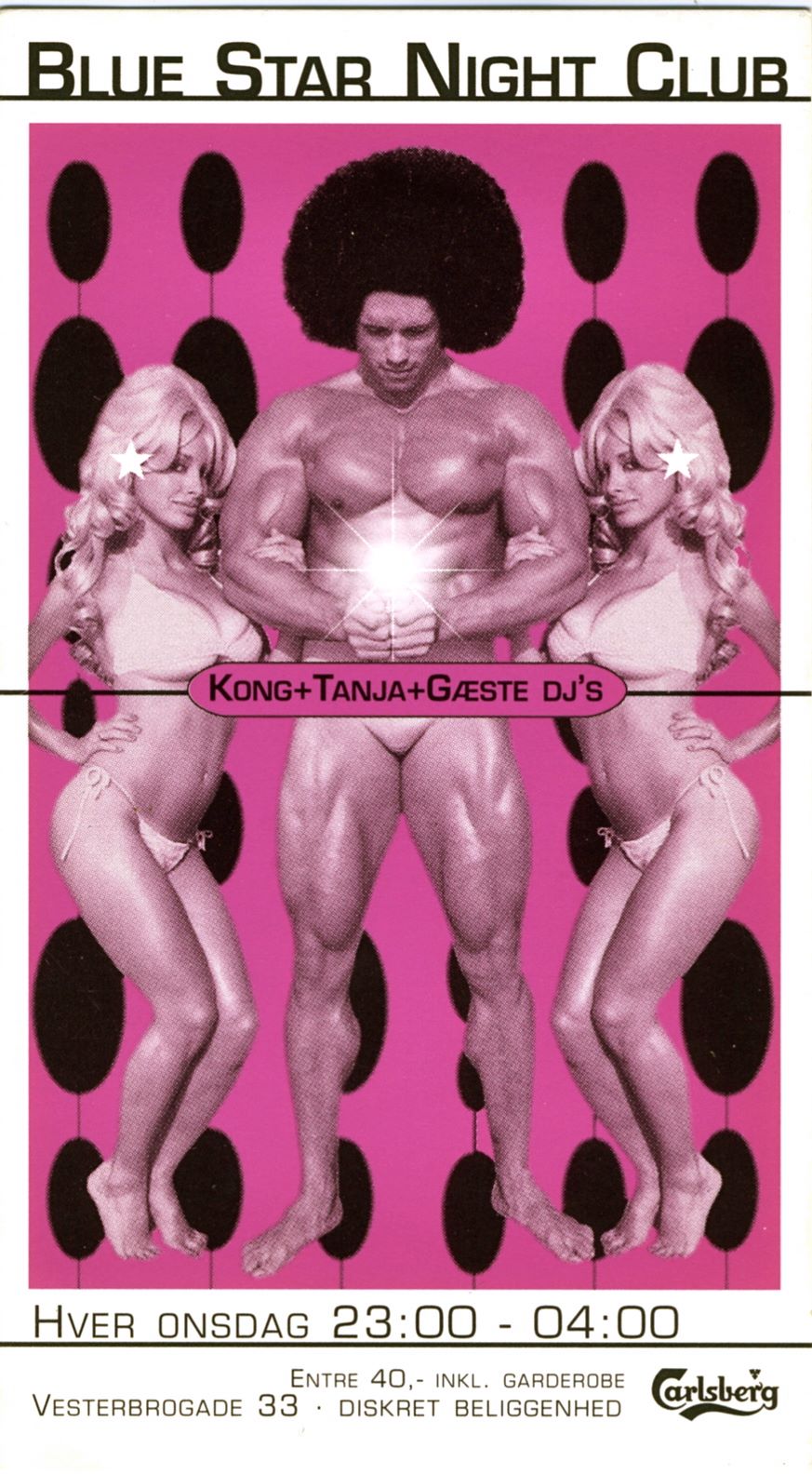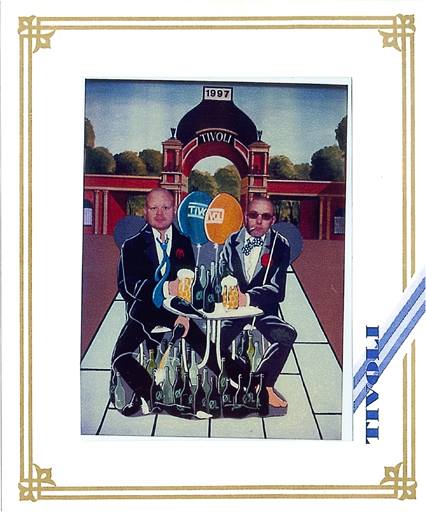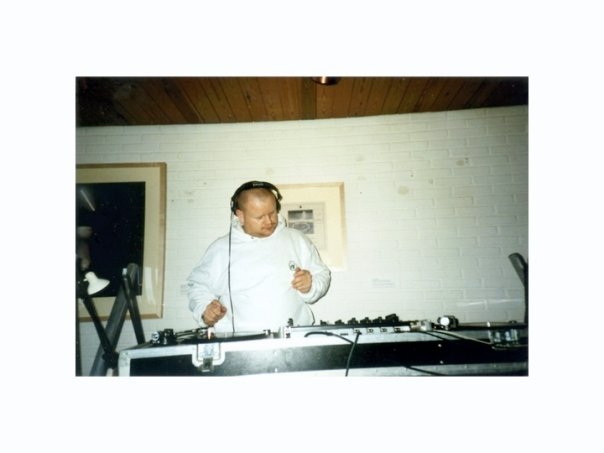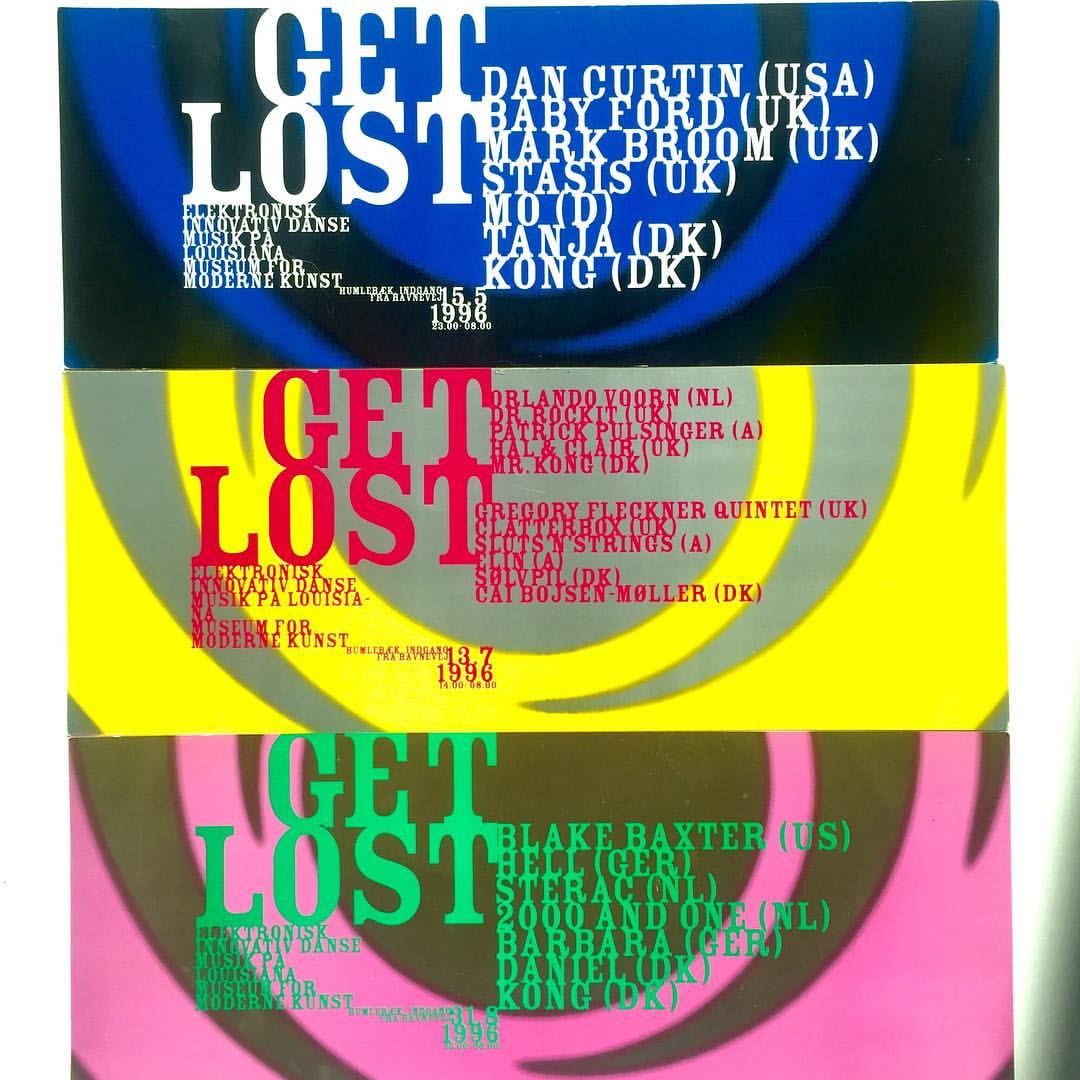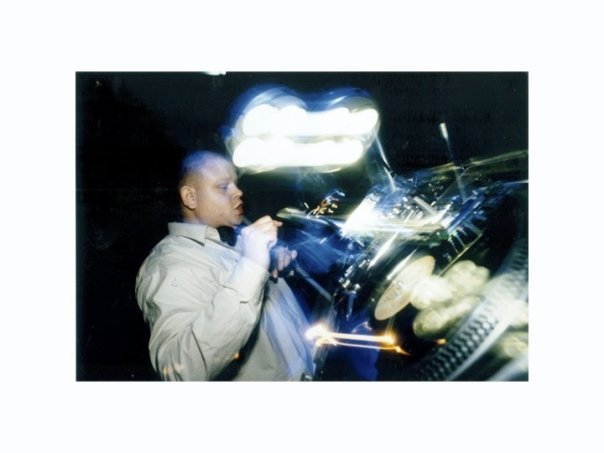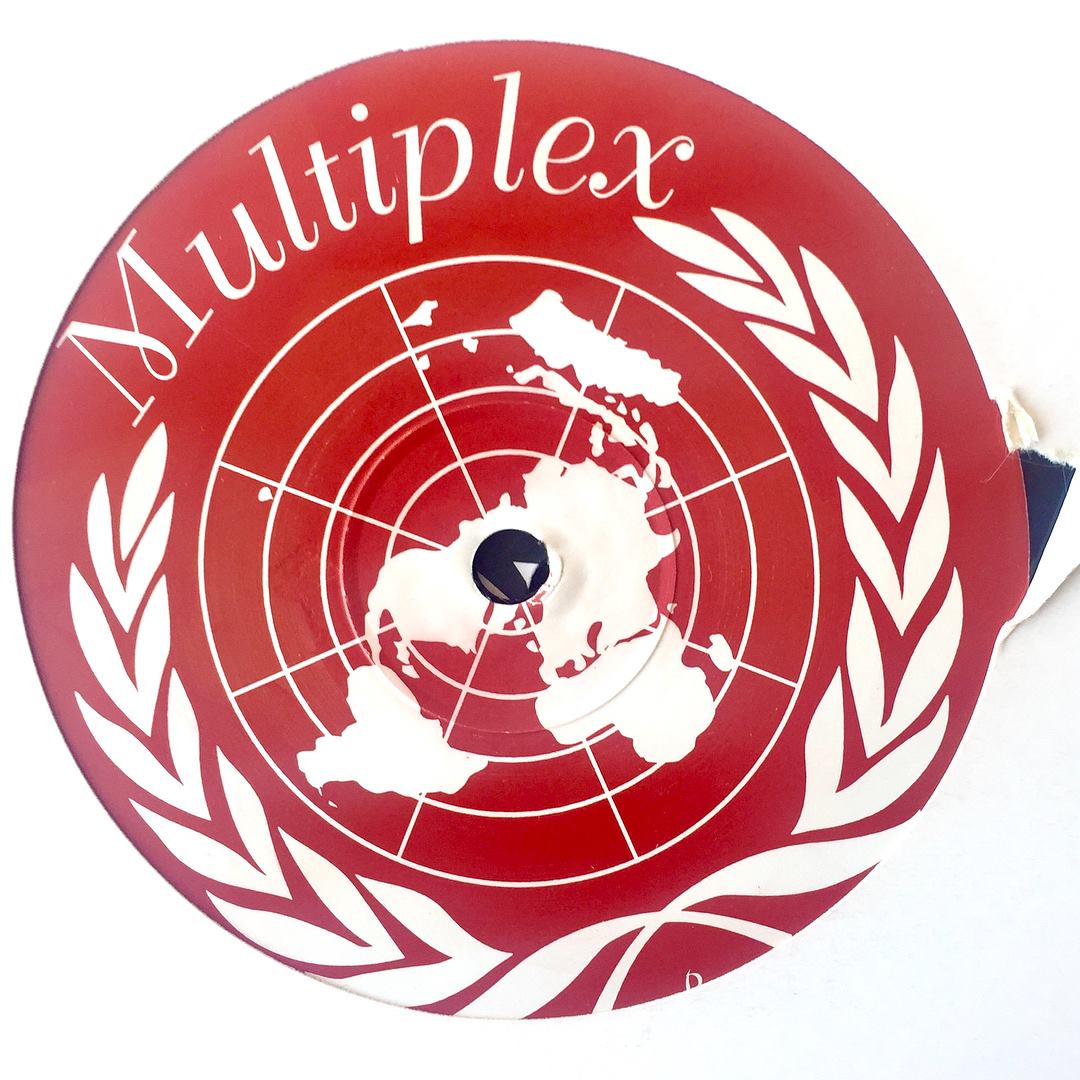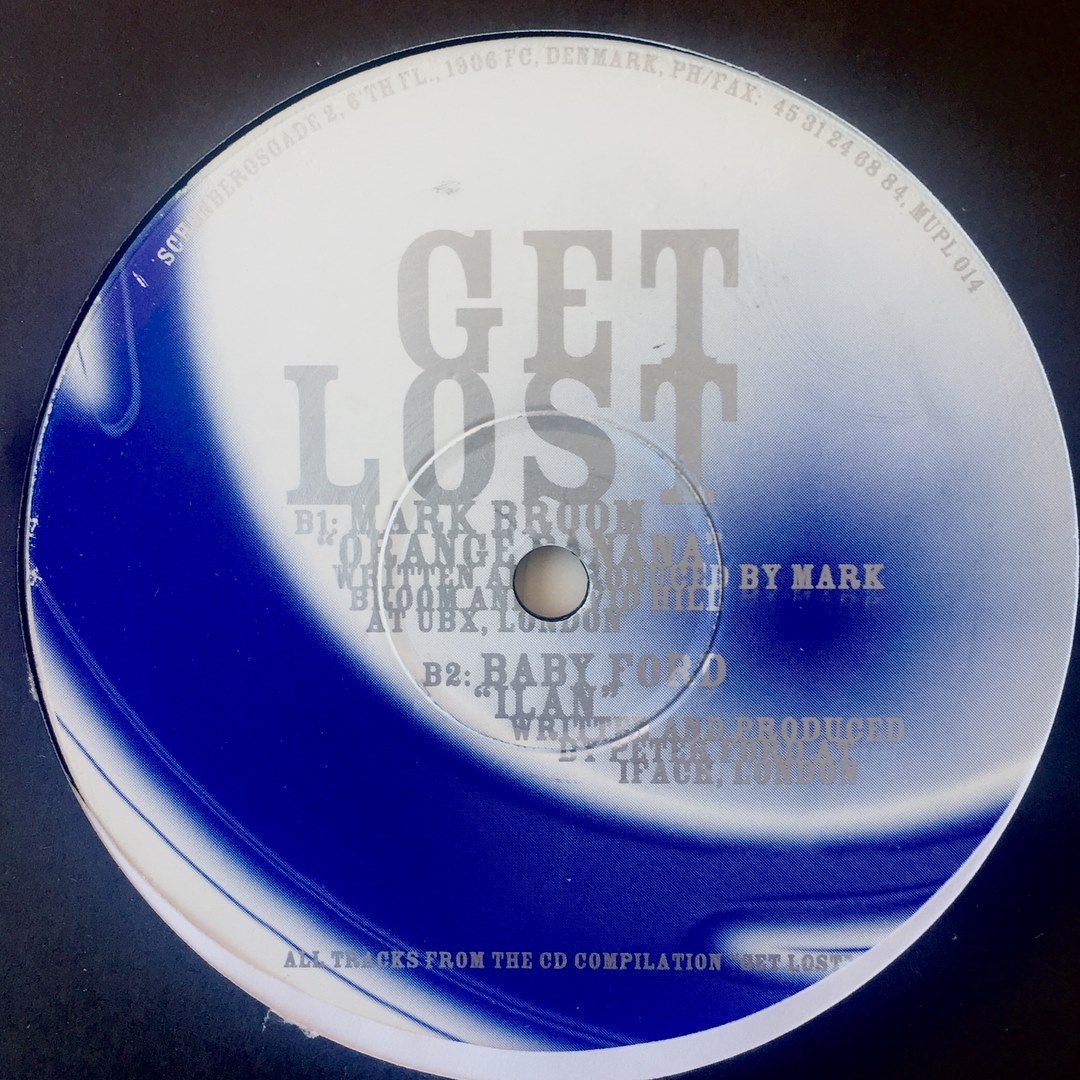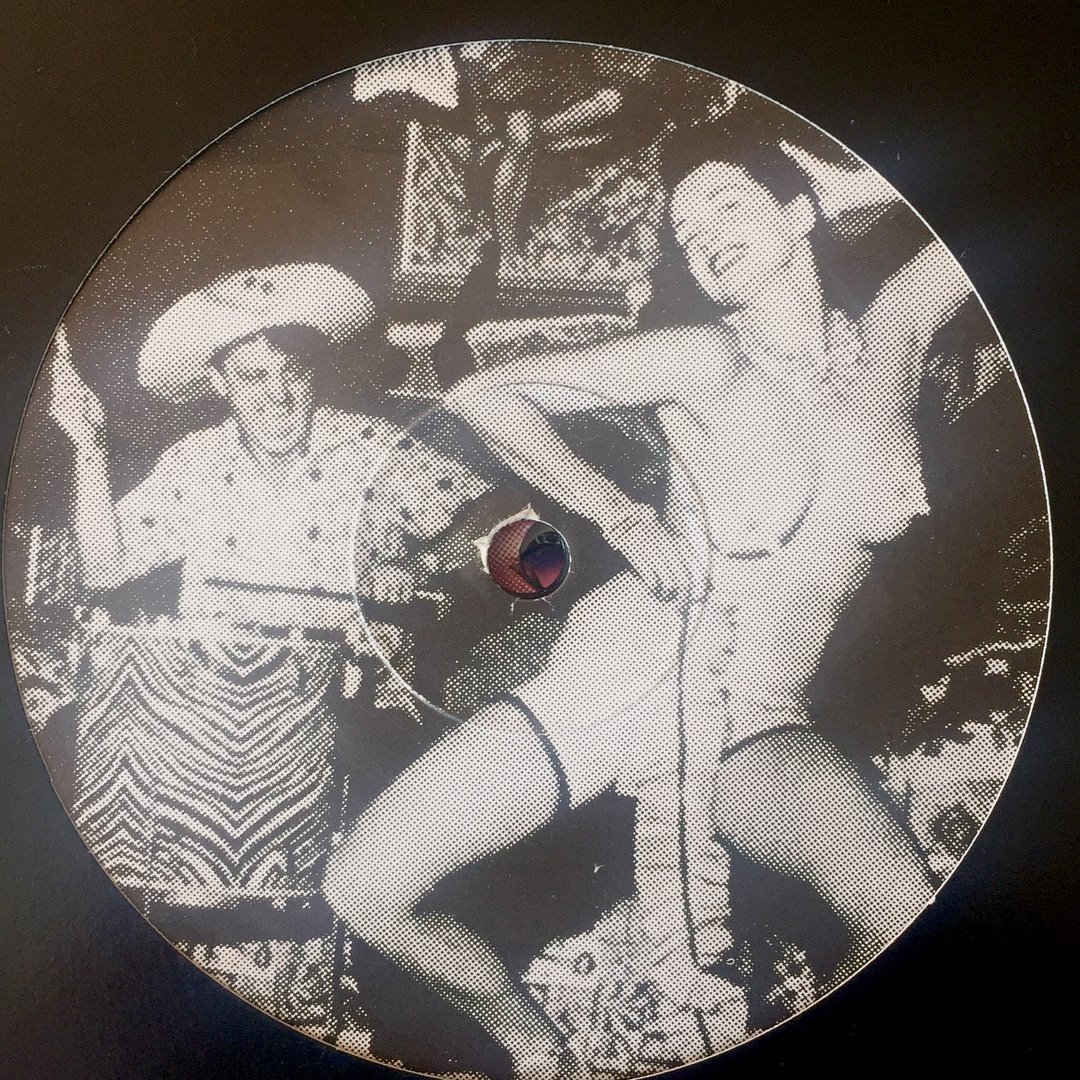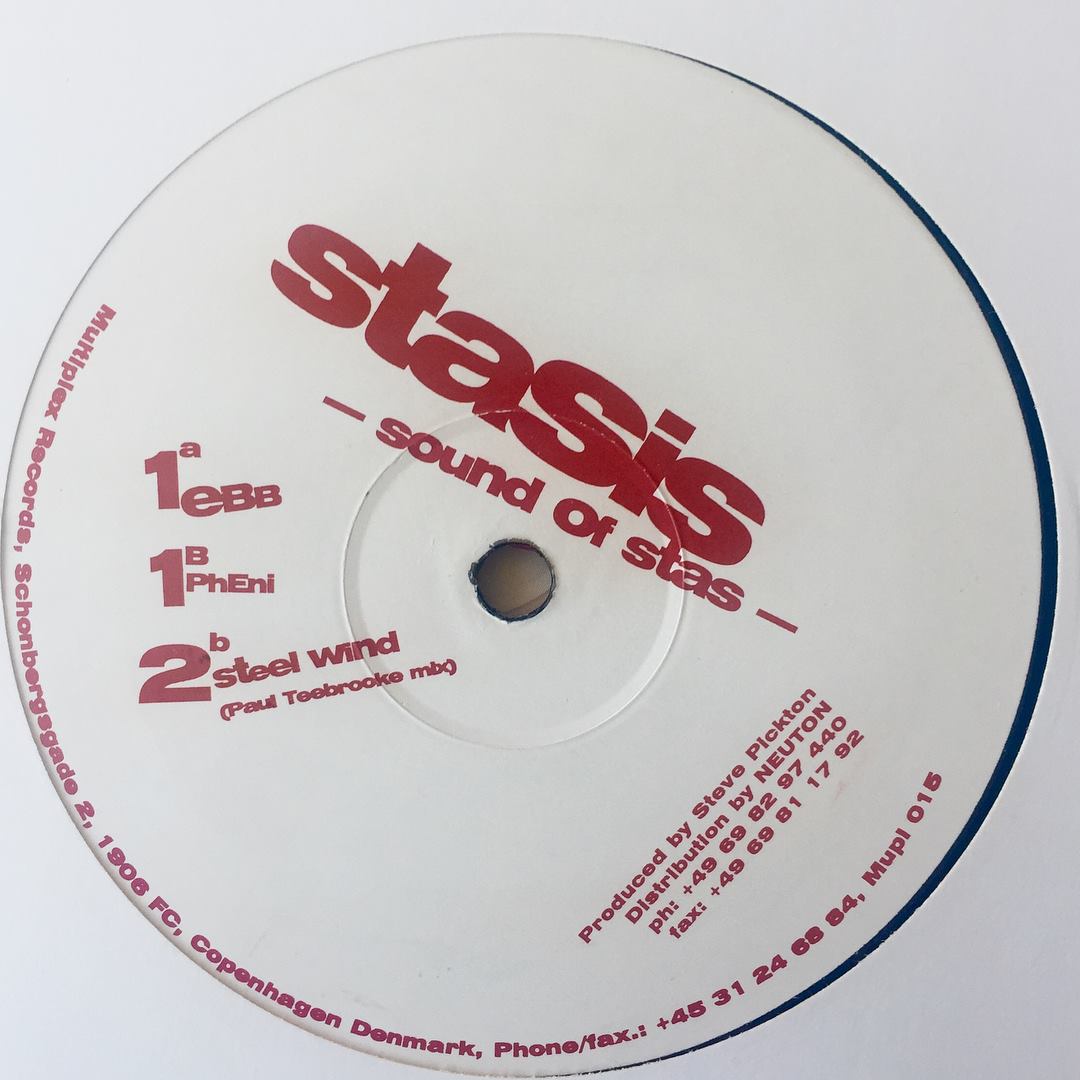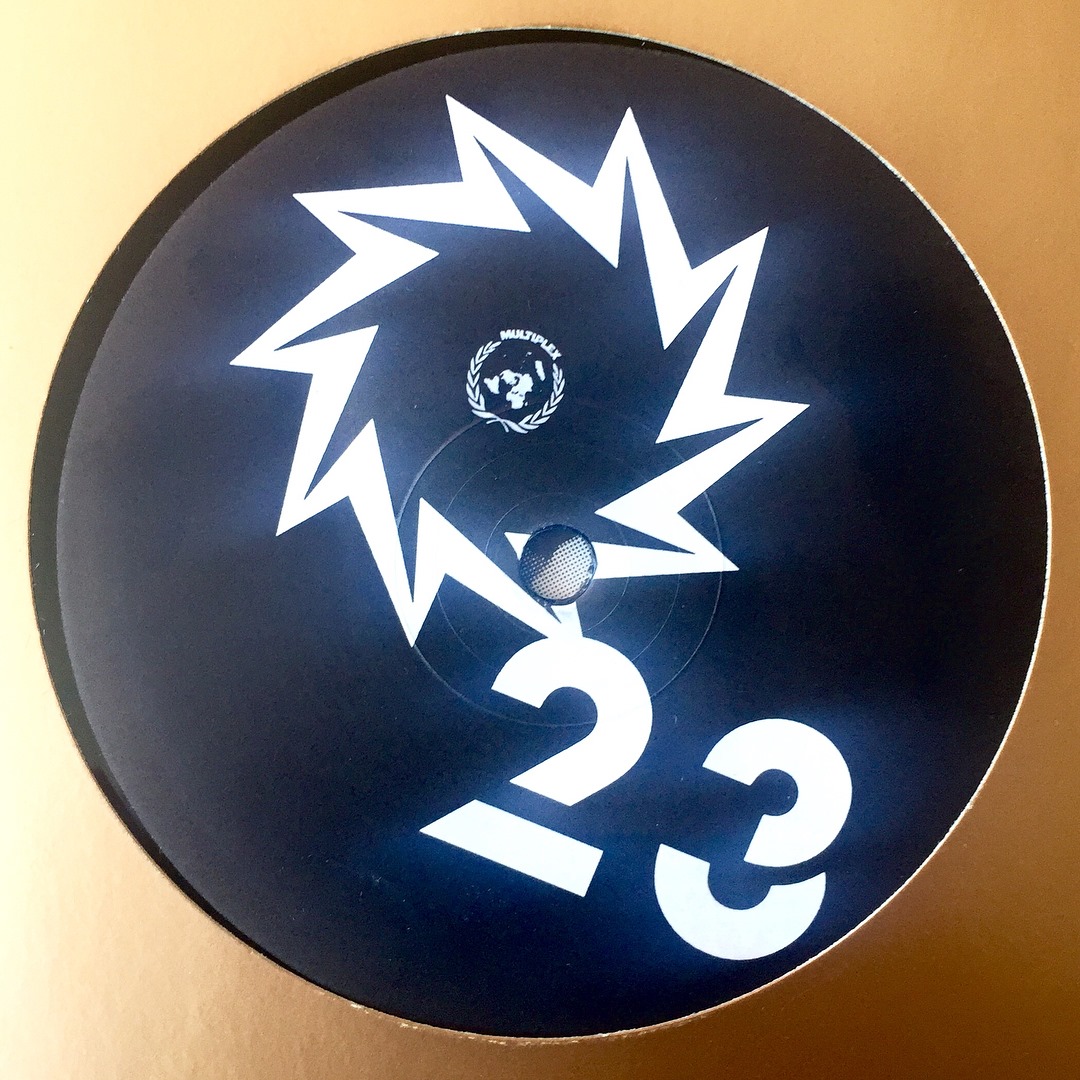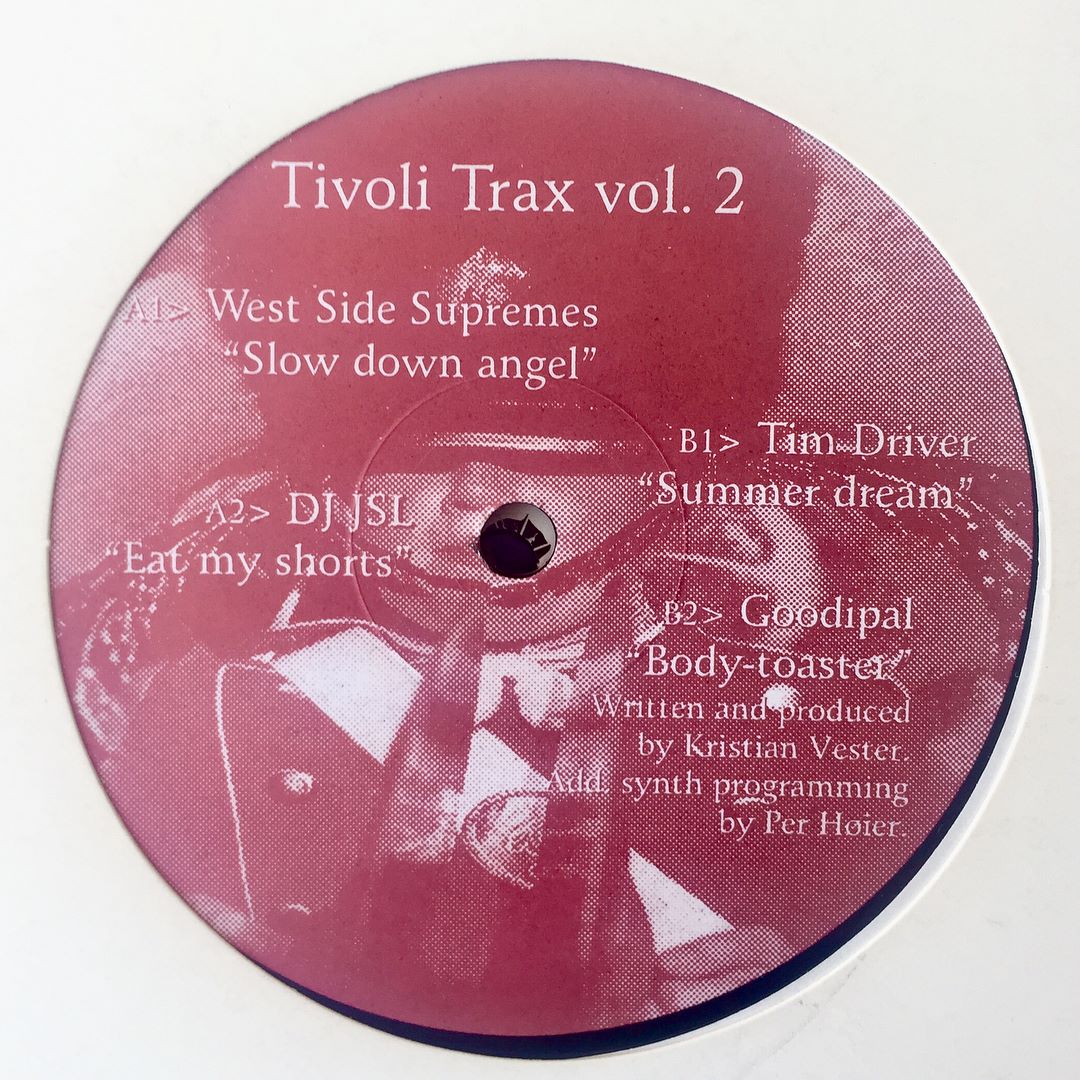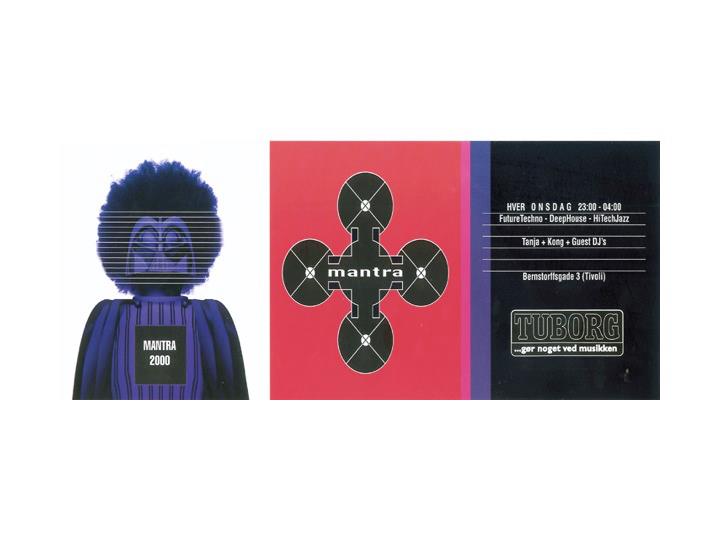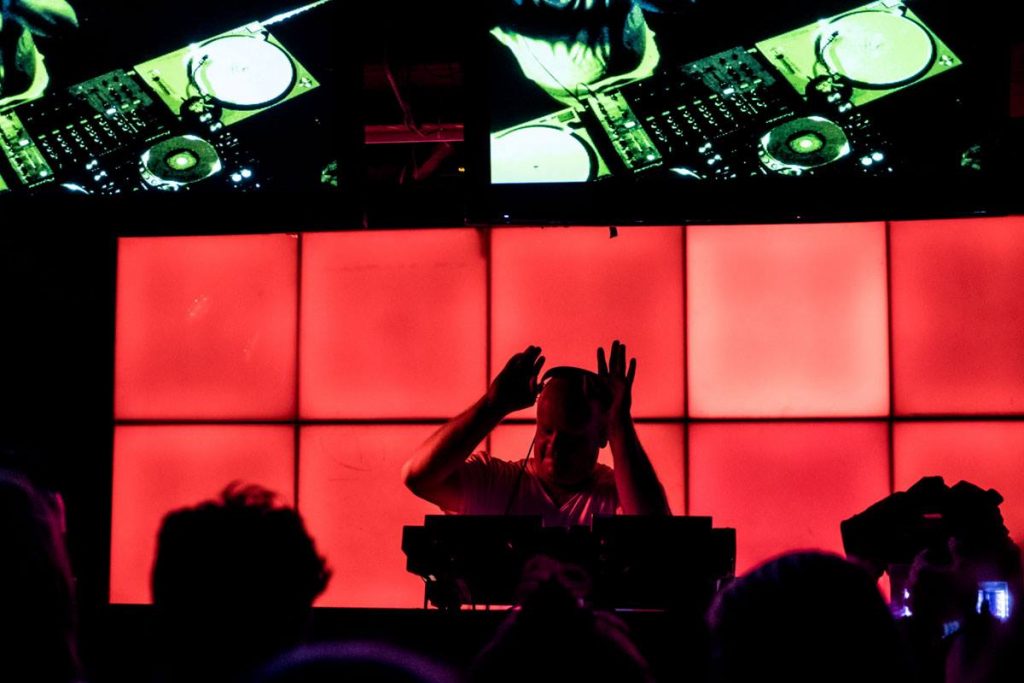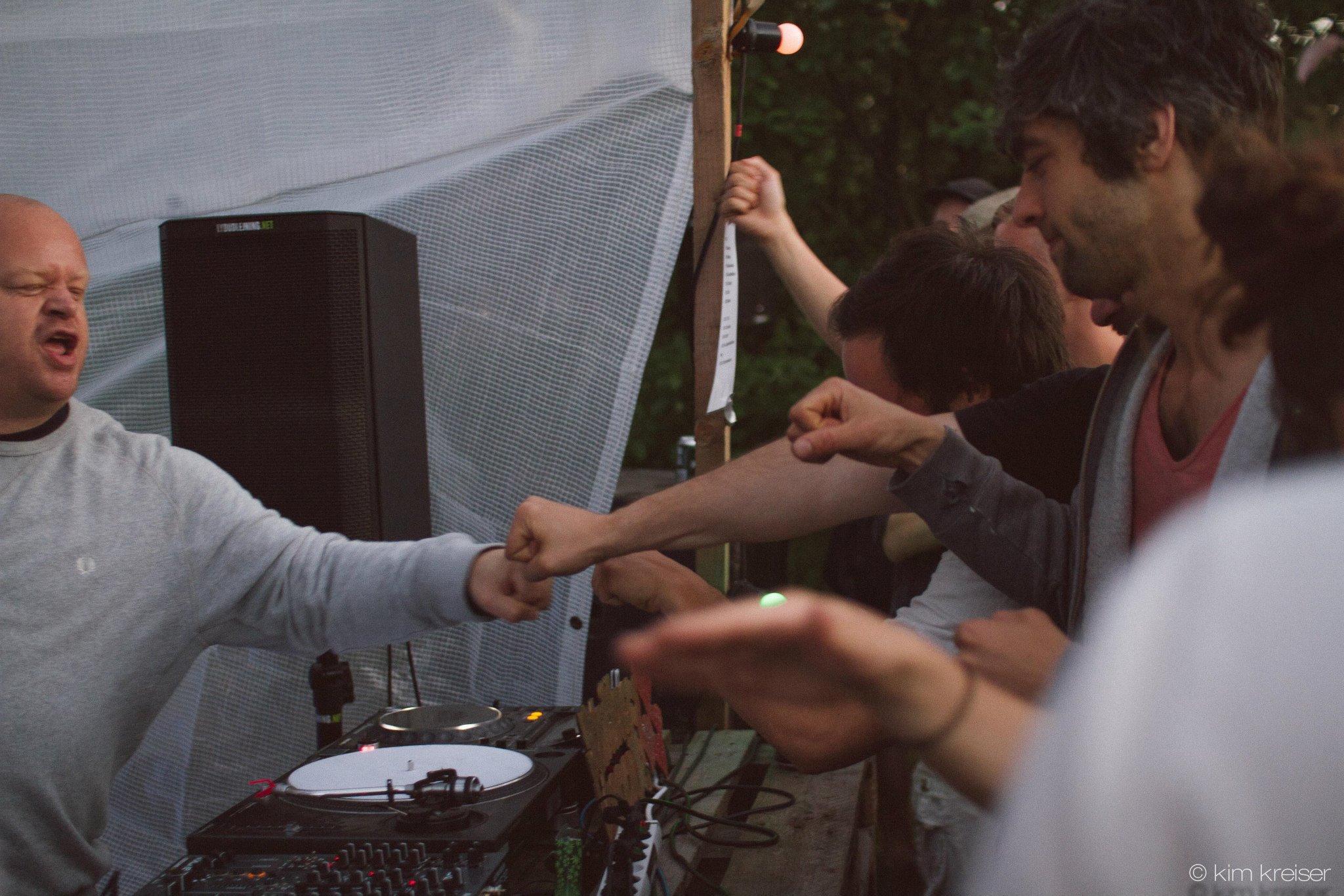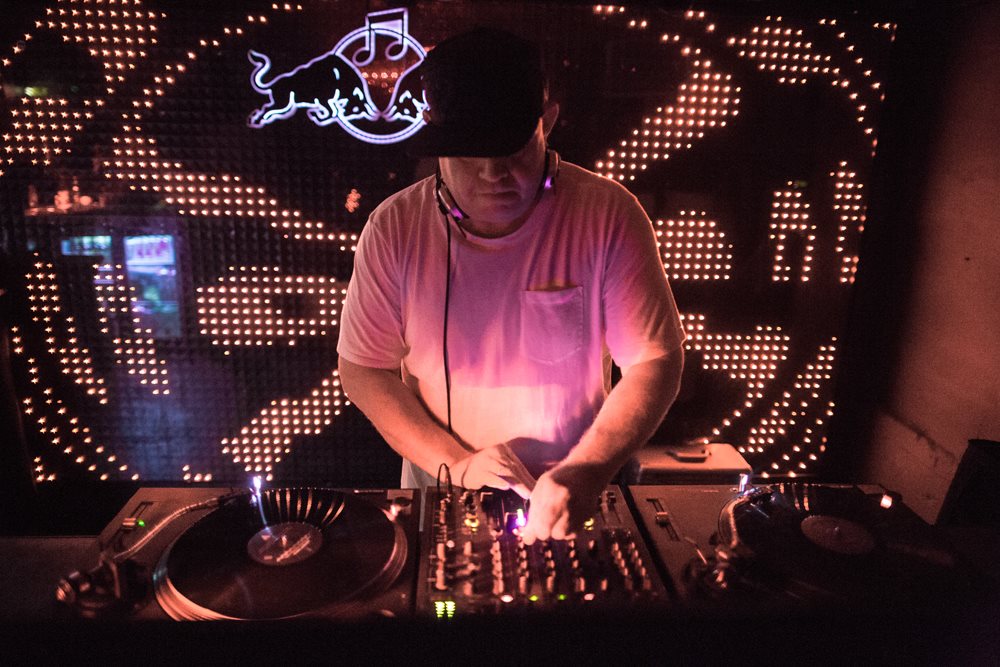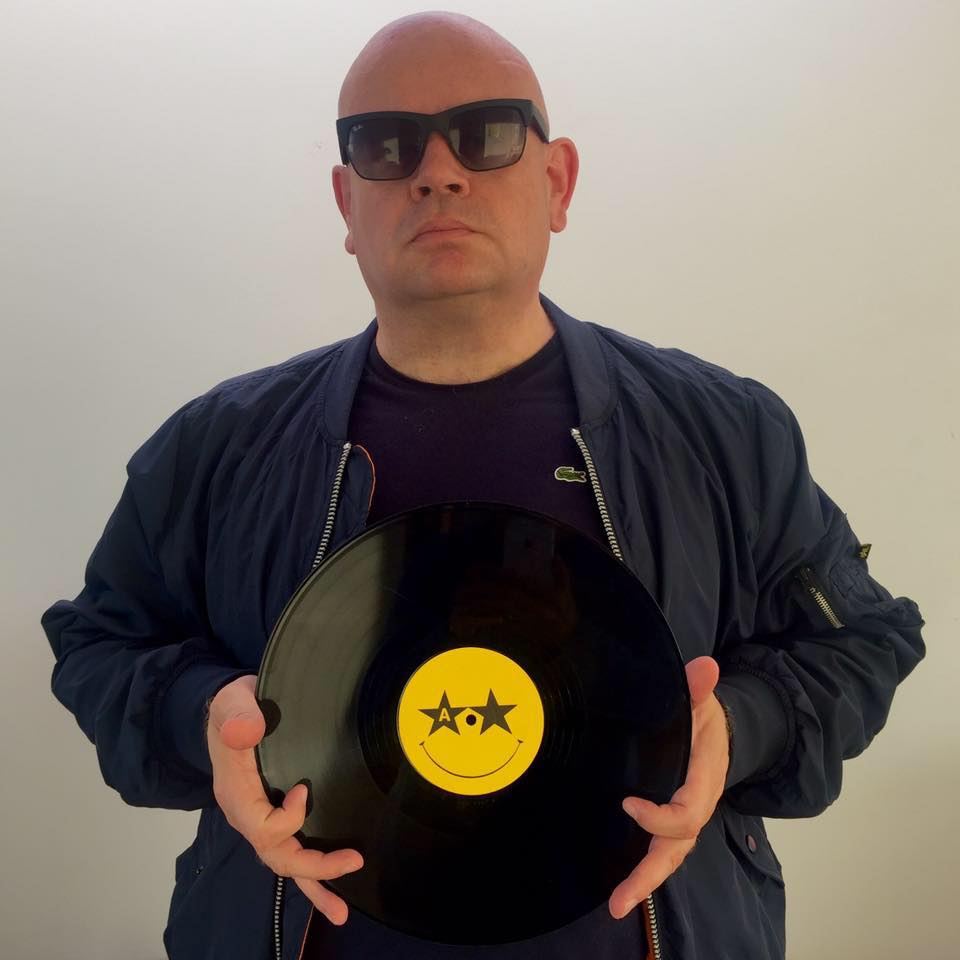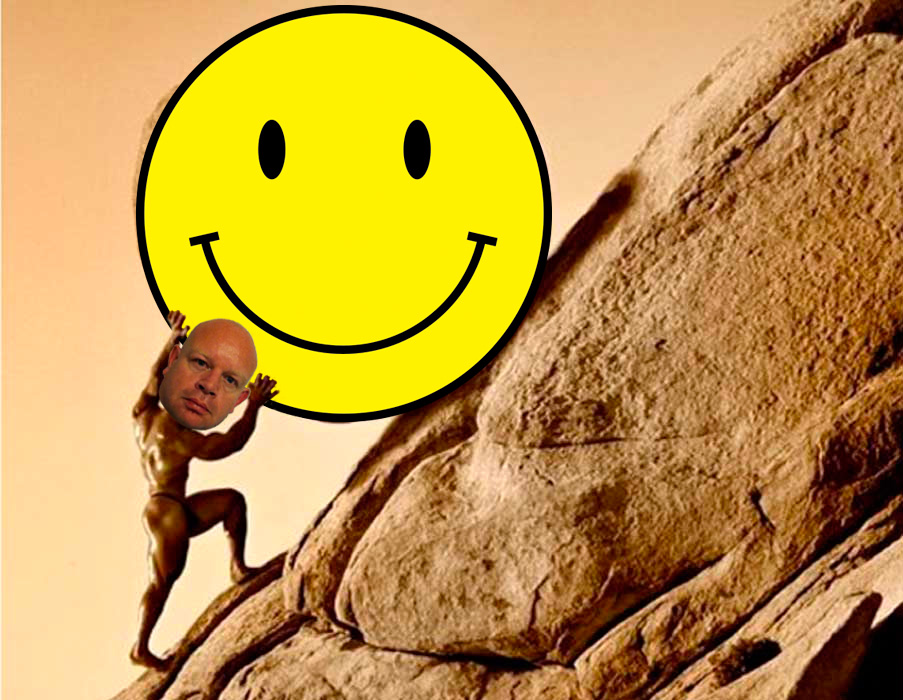As I push down the doorbell and wait for a respond, my brain is racing 100 mph. Until a few days ago, I was only aware of a vinyl spinner named Steen Kong but as my research went deeper my eyes got bigger and my jaw lower. Steen Mogensen, as he is known by the government, is a living DJ legend, who helped take Copenhagen’s underground scene to the next level in the 90’s. Throwing parties where no rave has ever gone before and launching a label that is still more than relevant in 2019. 35 years in the business and still going strong.
Jefferson, Roosevelt, Lincoln and Washington were the OGs of American politics who smirk down at us from Mount Rushmore. In my best opinion we should start carving into Møns Klint so that Steen Kong’s smooth face can take its rightful place on the top for Mount Ravemore, as one of the founding father of underground house in Denmark.
A few seconds have passed since I rang the bell and my mind has not slowed down. Quite the opposite. For some reason now I am debating if I should do an normal handshake or maybe greet Steen with my best Wayne’s World impression; fall to my knees and recite the undying words “I’m not worthy”. Even though Steen would have deserved a Mike Myers style greeting, I am pretty happy that I went with the first option.
We get the customary pleasantries over with and my mind slows down. It’s time for a history lesson.
How it all started
The first records Steen flipped was in his childhood home, when his parents hosted parties. Pre-teen Steen settled in as the house DJ so vinyl became a good friend from early on. In his early teenage years he found himself hanging out at the local youth club Lydpotten. Hoping that the DJs there would get too drunk to play and give him a shot. A pretty good tactic to get some early experience in the booth. Four years later came the first job.
– I was very excited for the opportunity to play my first paid gig ever. I brought my favorite records: Human League, New Order, Gwen Guthier, Grace Jones, Hot Chocolate, Depeche Mode, Yello, The Smiths. It was a dream come true, even though the pay was 500 kroner and some drugs, laughs Steen, before moving on to the early rave days in Aarhus.
– Back in those days it was quite rustic at raves. Auto-shops, abandoned warehouses and other places outside of the city center. The sound back then was somewhere between New Wave and Acid House. Back then it was not uncommon for ravers to travel to Aarhus for some good times. Of course it also helped the scene along that we had a Dutch friend bringing a suitcase full of ecstacy, says Steen with a reminiscent smile on this face.
It is worth adding that the trolley suitcase was brought to Denmark in a different time – before the substance was made illegal. And perhaps this was also Steen’s reason for calling the parties he hosted with Kjeld Tolstrup and others in Aarhus “Deep Sea Ecstasy Party”.
That name
In the business of spinning records, one needs an alter ego. The requiring of such can have quite strange back stories. Steen Kong’s case is no exception. As so many other good stories this one begins with: I was in Thailand. But before you start thinking of old Germans on ‘diving holiday’, let’s give the talking stick to Steen.
– This was back in 1988. My backpacking adventure took me to Koh Phagan and I had brought some mixed cassettes with my favorite tracks along. I met some nice British people from the legendary “Shoom” club, who were on a prolonged Summer of Love. They also brought mixed cassettes from home. We swapped cassettes, became friendly, and actually arranged some of the first, now legendary, full moon parties on the island. It so happened that my birthday was coming up and we decided to have a beach party. Naturally you need a flyer for a party so I needed a DJ name. This was before it was normal to just use your own name. I had nothing in mind. But I had been driving on the back of pick up trucks with the locals who would touch my arm hair, call me King Kong and laugh friendly like only the Thai people can. So I went with King Kong. When I got home I showed the flyer to my late, great friend Kjeld Tolstrup. He laughed quite a bit and suggested it for my permanent DJ alias. That’s how I became King Kong, says Steen.
But as we all know from the movie; King Kong can’t live forever and Steen’s use of the alias came to an end.
– A long time after Thailand I was touring Europe, I was playing a party at Brixton Academy in London. After my set I was introduced to a very big black man, two meter tall and just as wide over the shoulders. He looks down at me and says “So, you are the King Kong?”. As I looked up at him and said yes, I knew right then that this alias did not really hold up. So from then on I changed it to Mr Kong, later just Kong and some years ago it became Steen Kong. Each representing different periods in my career, Steen tells.
Ultramarine – out of the darkness
The name Ultramarine might not mean anything to you, but this was when the underground first peaked its head up from the damp basements and rustic surrounding in Denmark. Steen now had some years of experience both DJing and hosting parties. Him and his partners in crime felt that the time was right and took an chance. A whole day party at Trekroner, a old fortress island just off the Copenhagen docks. The Orb was the star booking – playing on the main stage – a raft on the water in middle of the artificial fortress island. 3000 people liked that description and was sailed to Trekroner for the party. Talking about this I can see how Steen’s face lights up even though it was 26 year ago.
– It was truly insane. The sun was shining for the first time in weeks. During the early sunshine hours of the evening both The Orb and I played ambient and very chilled music. When darkness came I fired up the bass and the crowd went mental. I could literally feel the island bounce underneath my feet. This is without a doubt one of my most cherished memories and still gives me goose bombs till this day, says Steen.
Even the Danish national broadcaster was there to interview Steen. With this massive party, the underground got its first headline in the primetime news. The rave scene had officially arrived in Denmark.
Putting Copenhagen on the underground map
Steen had his nose in a lot of different club concepts. The first one in Aarhus was called “Himmelblå Igen”. After it closed down he packed up his records and moved to Copenhagen where he played more underground parties than he can remember and also started getting bookings around Europe as well. It was the time right after Ultramarine – Steen and his missed late rave partner Henrik Möll still buzzing from the event felt that the time was right to try and put Copenhagen on the European club circus map. How to do that? By opening a weekly club naturally. Eigers Ballroom on Islands Brygge was the place but it was a rough start.
– We actually had an amazing first night. Full house and a high powered dance floor until the early hours. So we were ready and psyched for the second night of our new weekly club, Mantra. But despite our hopes we ended up with 13 paying guests. So we started putting some more effort into promotion and even more important, we had shuttle busses going back and forth to the city center. It became a success and we had some mind blowing parties there with good local and international acts, as The Source, Kenny Larkin and David Holmes. Also, we gave Ellen Allien her international debut – it gives me a lot of joy that we were able to book new artists who have matured like fine wine, says Steen.
The first Mantra ran for one year. I can only imagine how hard it must have been to introduce Denmark to raver culture on a weekly basis. But with the first Mantra club Henrik and Steen had kicked down one of the first barriers, and Denmark ever so slowly opened its eyes to this new phenomenon. Mantra continued but on a more nomade based existence with parties at Pakhus 11, Planetariet, Øl & Vin God and later as a Wednesday club at Vesterbro in the basement under an indian restaurant.
During this time Steen also started touring Europe. He packed up his record and made people dance all the way from Helsinki in the north to Barcelona in the south. This went on from 1995 till 2003.
The art of raving
In 1996 at the renowned museum Louisiana the NowHere was on the poster. Besides paintings and installations the museum saw that rave culture had an important role to play in the exhibit. Steen was the museum’s go to guy for techno and he did not need much convincing to get onboard with hosting three raving museum nights and a compilation album. The performing artists of the parties made an exclusive track for the album that was part of the exhibition. Mark Broom, Sterac, Blake Baxter, Herbert and DJ Hell to mention a few. The whole experience was a high point in Steen’s club life but the amazing contrast is what really stuck with him.
– Louisiana is one of the most beautiful museums I have ever been to, so I loved the idea. I remember the surprised look on the international acts faces when they saw their “hotel rooms” right by the water with more Danish design than I ever seen in one place. I also remember there being a lot of security. Museum security, so a lot of gray hair in suits. In sharp contrast to the ravers with Buffalo shoes and fluorescent clothing that covered some of their body. But despite being from different worlds there was nothing but smiles, respect and hugs with the security. That just warmed my heart. It was pretty freaking cool to melt those two worlds together, says Steen.
The first hour of conversations just flew past and I have to excuse myself to the bathroom. Walking through the apartment I come to think that most downstairs neighbours would be afraid of water damage – Steens downstairs neighbours should fear the weight of the insane amount of vinyl crushing them in their sleep. 12.000 records spread around the two floor apartment. An organised chaos that nobody but Steen knows how to figure out.
– I have never been able to organize them alphabetically, genre or geographical. It is a DJ collection that has its own life. I move around the piles for years until suddenly a few pieces form the cornerstone for a set. Which means that my own collection can surprise me and coincidences can inspire and rule. I love that, says an enthusiastic Kong.
Multiplex
Getting all caught up in the party talk, we completely glossed over that Steen also started his record label Multiplex in 1995 while Mantra was living its nomade life. From 1995-1998, 33 releases on vinyl and CD.
– In my best opinion, if you don’t do vinyl, you don’t have a record label. Music label, sure, but to me record label equals wax. I’m really happy with our releases, which includes releases with pioneers like Baby Ford and Orlando Voorn and brand new names like John Tejada and Morgan Geist. We also released Kölsch for the first time, back when him and a friend called themselves Artificial Funk. It was easy to see already back then that he had massive potential. It warms my techno heart to have had the opportunity to offer a platform for some of the big ones today, says Steen.
Mantra 2.0
At this point you can’t be surprised that Steen went where no raver had good before. Therefore me telling you that Mantra 2.0 set up in Copenhagen’s biggest tourist attraction, Tivoli, can’t be a surprise. Steen and his partners hosted another club in the most unlikely of places. Mantra was Thursday to Saturday each week. According to Steen it was his favorite time in his 35 years of service to the underground house scene. Artist like K-hand, DJ Bone and Bob Sinclar stopped by. After two years this era also came to an end. The last night went several hours over closing time, since nobody wanted to go home.
A Barcelona residency
– Mantra was over but I was still hungry. Luckily I got offered a residency at Jazzroom in Barcelona. My lovely wife couldn’t leave her job in Denmark, so I went alone. I would love to have shared this experience with Pernille, who has stood by my side through this adventure and is big part of my success. At the same time, it was also really amazing to just dive deep into my passion. I played six nights a week and spend a good deal of my time going to record stores, flipping through vinyl and just getting better. Barcelona was an incredible city to live in, but slowly I started getting a bit full. I loved Jazzroom, don’t get me wrong. But six nights a week in the same place is a lot, says Steen.
After 18 month in the capital of Catalonia Steen called it. Back to Copenhagen and time for a change. The wax-handler went back to school to become an elementary school teacher. The club gig got intentionally fewer and Steen played his ‘last’ gig in 2005. Not long after graduation Steen got hired to teach math and religion. He is still happily employed teaching, but has after a four year break rekindled his love for the underground. The man to pull him back in was none other than infamous Marcel Dettmann.
Back in the game
– I found out the Marcel had put two Multiplex tracks on a v/a album, without asking. To be fair we did not really have any contact information and it was all sorted out. And I thought that if our old shit was still worth something for a guy like him, that maybe we should restart the label. Later on I also saw a Nina Kravitz mix on Youtube and she was spinning another one of our releases – for the full seven minutes! I knew it was time to get back in the game, says Steen.
And back in the game he got. Hosted a monthly club at Culture Box from 2012 to 2018 and still is a regular guest at the Box, his monthly all-nighter “Sjæl Til Sjæl” at Bakken and been all over with his disco crew “Love Hangover” for the last 5 years. Also managed five new Multiplex releases since 2018 and most important of all, found the joy of DJing again.
– The good people of Søndagsvenner asked me to come play. The crowd was just amazing and so full of love. I played Gypsy Woman, a defining track from back in the day for me – I could see the hands in the air, feel the magic again and I almost had a tear running down my face, says Steen Kong.
Authenticity
After almost two hours in the presence of the raving godfather, it’s time to shake Steen’s hand one last time and be on my way. As I get on my bike I can’t help but think about how it must be to put fingerprints on 35 years of house history in the kingdom of Denmark. Even after this many years he’s still is eager to learn from his colleagues and further perfect the craft of vinyl spinning. As the wind hits my back and blows me forward I am reminded of Steen’s talk of magic.
– Music isn’t something that you should do from a steady formula. It’s the magic that happens when the DJ is on top of his game, the crowd is ready and the venue works. These things work in mysterious way but leads to a higher consciousness. My most important task is to make people dance. That being said I would never play anything that I would not dance to, says Steen, inside of my head.
It’s important to know your history and in the case of raving in Denmark we are standing on the shoulders of giants – among others the great Steen ‘Kong’ Mogensen who has pledged a lifetime of allegiance to the raving culture. 35 years and counting this authentic raverheart has bled and I am more than sure that we haven’t heard the last from the man formerly known as King Kong.
BY MARTIN ESKESEN – COVER PHOTO BY FLEMMING BO JENSEN



